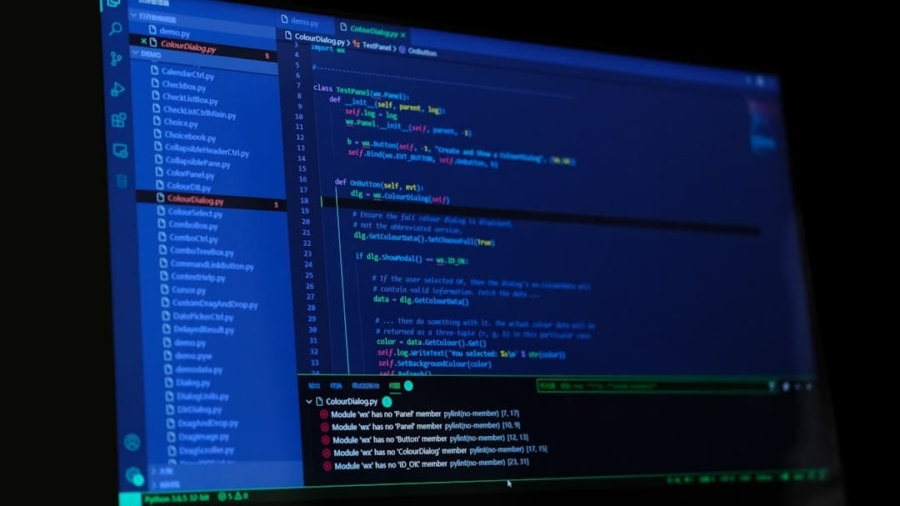The advent of 5G technology has ushered in a new era of communication, characterized by unprecedented speed, low latency, and enhanced connectivity. Among the most exciting applications of this next-generation network is holographic communication, which promises to revolutionize how we interact with one another and with digital content. Holographic communication allows for the transmission of three-dimensional images that can be viewed from multiple angles, creating a more immersive experience than traditional video calls or virtual meetings.
This technology has the potential to bridge geographical divides, enabling real-time interactions that feel more personal and engaging. As we delve deeper into the realm of 5G-powered holographic communication, it becomes evident that this innovation is not merely a futuristic concept but a tangible reality that is rapidly taking shape. The combination of 5G’s high bandwidth and low latency with advanced holographic technologies paves the way for applications across various sectors, including healthcare, education, entertainment, and business.
By harnessing the power of holography, we can create virtual environments that mimic real-life interactions, thereby enhancing collaboration and communication in ways previously thought impossible.
Key Takeaways
- 5G-powered holographic communication is revolutionizing the way we interact and communicate, offering a more immersive and engaging experience.
- Advancements in 5G technology, such as increased bandwidth and lower latency, are enabling the seamless transmission of high-quality holographic images and videos.
- The impact of 5G-powered holographic communication is far-reaching, with potential applications in healthcare, education, entertainment, and more, transforming the way industries operate.
- Despite its potential, 5G-powered holographic communication faces challenges such as infrastructure requirements, cost, and technical limitations that need to be addressed for widespread adoption.
- The future of 5G-powered holographic communication holds promise for everyday life, with potential applications in teleconferencing, virtual events, and remote collaboration, enhancing the way we communicate and connect with others.
Advancements in 5G Technology for Holographic Communication
Seamless User Experience
For holographic communication, this means that data-heavy 3D images can be transmitted in real-time without noticeable delays, creating a seamless user experience. Moreover, the introduction of edge computing in 5G networks further enhances the capabilities of holographic communication. By processing data closer to the end-user rather than relying solely on centralized cloud servers, edge computing reduces latency and improves responsiveness.
Practical Applications
This is particularly important for applications requiring real-time interaction, such as remote surgeries or virtual meetings where participants need to engage with holographic representations of one another. The synergy between 5G technology and edge computing thus plays a pivotal role in making holographic communication not only feasible but also practical for everyday use.
Impact of 5G-Powered Holographic Communication on Various Industries
The implications of 5G-powered holographic communication extend far beyond mere novelty; they have the potential to transform entire industries. In healthcare, for instance, doctors can utilize holographic communication to conduct remote consultations with patients or collaborate with colleagues across the globe. Imagine a surgeon performing a complex procedure while consulting with a specialist who appears as a hologram in the operating room, providing real-time guidance and expertise.
This level of collaboration can lead to improved patient outcomes and more efficient use of medical resources. In the realm of education, holographic communication can create immersive learning experiences that engage students in ways traditional methods cannot.
Similarly, in vocational training, students can practice skills in simulated environments that closely resemble real-world scenarios, enhancing their preparedness for future careers. The ability to visualize complex concepts through holography can significantly enrich the educational landscape.
Challenges and Limitations of 5G-Powered Holographic Communication
Despite its promising potential, 5G-powered holographic communication faces several challenges and limitations that must be addressed before it can achieve widespread adoption. One significant hurdle is the infrastructure required to support such advanced technology. While urban areas may have access to robust 5G networks, rural regions often lag behind, creating disparities in connectivity.
This digital divide could hinder equitable access to holographic communication tools, limiting their benefits to those in well-connected areas. Additionally, the complexity of creating high-quality holograms poses technical challenges. Generating realistic three-dimensional images requires sophisticated hardware and software capable of processing vast amounts of data in real-time.
Current devices may struggle to deliver the level of detail and clarity necessary for effective communication. Furthermore, as holographic technology evolves, there will be a need for standardization across devices and platforms to ensure compatibility and interoperability. Without these standards in place, users may face difficulties when attempting to connect across different systems.
The Future of 5G-Powered Holographic Communication in Everyday Life
Looking ahead, the integration of 5G-powered holographic communication into everyday life appears inevitable as technology continues to advance.
Imagine attending family gatherings as holograms or participating in social events where friends appear as lifelike projections in your living room.
Such experiences could redefine social interactions and create new avenues for connection. Moreover, businesses are likely to adopt holographic communication tools for marketing and customer engagement. Retailers could offer virtual shopping experiences where customers interact with holographic representations of products before making a purchase decision.
This level of interactivity could enhance customer satisfaction and drive sales by providing a more engaging shopping experience. As these technologies become more mainstream, we may witness a cultural shift towards embracing holography as a standard mode of communication.
Security and Privacy Concerns in 5G-Powered Holographic Communication
As with any emerging technology, security and privacy concerns are paramount when considering the implications of 5G-powered holographic communication. The transmission of sensitive data through holograms raises questions about how securely this information is handled and whether it is susceptible to interception or unauthorized access. Ensuring robust encryption protocols will be essential to protect users’ privacy during holographic interactions.
Furthermore, the potential for misuse of holographic technology cannot be overlooked. The ability to create realistic representations of individuals raises ethical concerns regarding identity theft and deepfakes. Malicious actors could exploit holography to impersonate others or manipulate public perception through deceptive representations.
Addressing these security challenges will require collaboration between technologists, policymakers, and industry leaders to establish guidelines and regulations that safeguard users while promoting innovation.
Potential Applications and Innovations in 5G-Powered Holographic Communication
The potential applications for 5G-powered holographic communication are vast and varied, spanning numerous fields beyond healthcare and education. In entertainment, for instance, filmmakers could utilize holography to create immersive viewing experiences that allow audiences to engage with characters and storylines in unprecedented ways. Concerts could feature live performances where artists appear as holograms on stage, enabling fans from around the world to attend virtually while feeling as though they are part of the live audience.
In the realm of remote work, companies may adopt holographic communication tools to facilitate collaboration among distributed teams. Virtual offices could be created where employees interact as lifelike avatars, fostering a sense of presence that traditional video conferencing lacks. This innovation could lead to increased productivity and creativity as team members brainstorm ideas in a shared virtual space.
Additionally, industries such as architecture and design could benefit from holographic presentations that allow clients to visualize projects before they are built, enhancing decision-making processes.
The Implications and Opportunities of 5G-Powered Holographic Communication
The emergence of 5G-powered holographic communication represents a significant leap forward in how we connect and interact with one another across various domains. While challenges remain regarding infrastructure, technical capabilities, security, and ethical considerations, the opportunities presented by this technology are immense. As we continue to explore its potential applications—from healthcare innovations to transformative educational experiences—the implications for society are profound.
As we stand on the brink of this new frontier in communication technology, it is essential for stakeholders across industries to collaborate in addressing challenges while harnessing the benefits that 5G-powered holographic communication offers. By doing so, we can pave the way for a future where our interactions are not only more engaging but also more meaningful—ultimately reshaping our understanding of connection in an increasingly digital world.
If you are interested in the latest technology trends, you may also want to check out this article on




